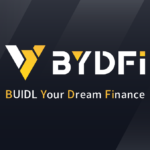Now Reading: Supercharge your productivity with an AI project assistant: A step-by-step approach
-
01
Supercharge your productivity with an AI project assistant: A step-by-step approach
Supercharge your productivity with an AI project assistant: A step-by-step approach

When it comes to AI, it’s easy to get distracted by all the flashy demos and headlines that are constantly splashed across social media. But the fact is, most people still aren’t leveraging AI in one of the simplest, most impactful ways it can be used: by creating an AI project assistant.
An AI project assistant can help you manage a wide range of projects across a wide range of business environments. It can dramatically boost your productivity and efficiency. Best of all, it’s much easier to set up than you might think.
In this article, I’ll walk through our simple, three-step approach to building an AI-powered project assistant, giving you the tools you need to create an AI assistant that will set you and your business up for success.
What is an AI project assistant?
Broadly speaking, an AI project assistant uses a generative AI platform like ChatGPT, Claude, or Gemini to manage a specific project within your organization.
For example, in our roles at HubSpot, some of our core projects include overhauling how we create demand, driving internal transformation via AI, and augmenting our go-to-market strategy. Each of these projects is associated with a desired outcome, and each one comes with lots and lots of people, communications, and all sorts of other data.
In our case, we’re managing huge teams with hundreds of people, but projects don’t have to be that massive to benefit from an AI project assistant. Whether you’re leading a thousand-person department or running a small business with just one or two employees, an AI-powered project assistant can help you act on the extensive data that is associated with your projects.
And how does it do that? There are three core parts of an AI project assistant: your context, your templates, and your instructions. Below, we’ll go through each of these vital components, sharing best practices and recommendations to help you set up an AI assistant like a pro.



![Download Now: AI Task Delegation Playbook [Free Kit]](https://no-cache.hubspot.com/cta/default/53/5076196a-be1d-4c0f-b03e-fb6cea9cfe4d.png)












:max_bytes(150000):strip_icc()/GettyImages-696273152-93f176ce68d44e06b35491f590ff4ded.jpg?w=1920&resize=1920,1267&ssl=1)










:max_bytes(150000):strip_icc()/2-JacobWackerhausen-fac270a9c4244227b9302d45fc8edec5.jpg?w=150&resize=150,150&ssl=1)

